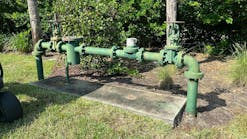It has been largely reported that fuel cells are a “solution in search of a problem”; however, much to the contrary, fuel cells have a significant role to play in solving America’s energy problem. Specifically, fuel cells can address the clean energy needs of the East Coast.
The Southwest has the open space, level ground, and high heat ideally suited for solar power. The Midwest has the steady breezes perfect for wind power. The area around Nevada and California is a geothermal center. East Coast cities do not have the space or resources required for other renewable power solutions such as wind and solar, and so are searching for alternative clean sources of energy. These cities need clean power that reduces greenhouse gas emissions and can also provide distributed power anywhere. Fuel cells are that solution.
Fuel cells are an old technology, first discovered as early as the 1830s, but have only gained real attention in the since the 1950s and ’60s. Fuel cells are power generation devices, similar to a battery, that provide electricity through an electro-chemical reaction, rather than combustion. The process takes in air and hydrogen, and produces electricity, water, and heat. Fuel cells are a clean technology that can use hydrogen fuel derived from a vast number of sources, virtually any substance with a decent amount of hydrogen.
Fuel cells are the answer for the East Coast, because they can utilize an abundant resource of the East Coast, the existing natural gas pipeline infrastructure. Using hydrogen-rich natural gas as a fuel source is very environmentally-friendly; natural gas powered fuel cells have dramatically reduced emissions of nitrogen oxides (NOx), sulfur oxide (SOx), and carbon dioxide (CO2), when compared to traditional grid power. Fuel cells using natural gas may not have the complete zero emissions as hydrogen, generated from renewable resources, but fuel cells are a vast improvement to a largely coal-fired grid. Furthermore, with tighter restrictions on emissions going into effect in most cities, fuel cells can fill the indispensable power niche while keeping emissions within standards.
Fuel cells also reduce green house gas emissions compared to the grid through their great improvements in efficiency. The American grid system provides power to the populace using a mix of combustion technologies and conveys electricity across countless miles of transmission lines. Our nation’s electric grid system is old and outdated; since its inception in the late 1800s, the grid has received little improvement. Additionally, the gaudy transmission lines needed to transfer power miles and miles from power plants to homes are often unwanted, and many large metropolitan areas have banned power lines from being built within the city limits. The transmission grid is also an impediment to the growth of traditional renewable power sources; Colorado recently reduced their solar target from 355 MW of power down to 185 MW, due to transmission line restrictions. Our outdated electric grid has left the nation dependent on inefficient power plants and “leaky” transmission lines. Most experts place the network as only 33% efficient, meaning that two-thirds of the coal, natural gas, and oil fed into the grid is wasted. The citizens of the US want to have clean energy, which means it is time to look into ways of updating our grid system, or even breaking from it, and fuel cells are an excellent way to do so.
Fuel cells have been tested extensively and have been shown to run at about 60% efficiency, almost double of what the grid can reach. Because fuel cells operate at greater efficiencies, greenhouse gas emissions are significantly reduced compared to grid power. Fuel cells can even become more efficient when used as a combined heat and power (CHP) units-when fuel cells operate, they produce electricity, water, and heat energy. That heat can be captured and used for heating, air-conditioning, and hot water in buildings as a further energy saver. These CHP units reach efficiency levels of over 70%, and some systems go as high as 80 or 90%. CHP systems not only increase the efficiency of a fuel cell, but also eliminate the need for gas and coal boilers, making the overall system more environmentally friendly.
There are already a number of CHP fuel cell systems in place up and down the East Coast. Two major supermarkets chains, Whole Foods and Price-Chopper, have introduced a number of CHP fuel cell systems in their stores with great results. For example, the Whole Foods in Glastonbury, CT, has a 200-kW fuel cell, which provides half of the electricity for the market and meets nearly 100% of the heating and cooling needs. Another fuel cell CHP unit is located in the Pepperidge Farm bakery in Bloomfield, CT. The Pepperidge Farm facility installed a 250-kW fuel cell system in 2006 that provided 20% of the base-load power for the bakery, as well as hot water. In 2008, Pepperidge Farms installed a second, larger, 1.2-MW fuel cell, supplying an additional 57% of the total electrical energy needs for the bakery.
Another way that fuel cells are an excellent fit for the cities of the East, is that they can provide continuous baseload power. Fuel cells are turned on and then essentially left alone. Fuel cells require little upkeep; since there are no moving parts, the only time they need to be turned off is to occasionally replace filters or perform general maintenance. Actually, fuel cells are highly reliable, operating at 90% reliability or greater; First National Bank of Omaha has operated fuel cells since 1999 that perform at 99.9999% availability. This is a great advantage over other alternative energy solutions, where wind’s availability averages around 30%, and solar power’s availability is roughly 20%. In addition, when traditional grid power is unavailable or unreliable, fuel cells running on natural gas can still operate, because their infrastructure is underground and off the grid. In the famous New York City blackout of 2003, the only place in midtown Manhattan with electricity was the Central Park Police Station, running off of a 200-kW fuel cell.
In fact, fuel cells can coincide with wind and solar power to provide a completely “off-the-grid” system. Mike Strizki, of New Jersey, has made his own home 100% renewable by using a fuel cell, electrolyzer, solar station, and hydrogen storage tanks. Solar photovoltaic panels produce electricity, while any additional electricity is fed to an electrolyzer to produce hydrogen through electrolysis (electrolysis is a process that takes energy and water and produces oxygen and hydrogen, essentially the reverse process of a fuel cell). This hydrogen is then stored in tanks for later use in a fuel cell when solar power is unavailable. Strizki’s home has enough hydrogen to provide electricity to his home year-round without any power from the grid. Strizki even has enough extra hydrogen stored in his tanks to run his hydrogen fuel cell vehicle, further reducing his carbon footprint by eliminating his use of gasoline based transportation. As a distributed power technology, fuel cells can provide electricity directly to individual home, businesses, and neighborhoods, either supplementing the grid or going completely off the grid.
Another way that fuel cells can be 100% renewable is by using anaerobic digester gas as a fuel source. Anaerobic digester gas is a common byproduct of sewage treatment, and therefore makes placing fuel cells at wastewater treatment facilities an ideal partnership. A number of wastewater treatment plants in New York have been operational for some time. For instance, the Westchester County Wastewater Treatment Plant in Yonkers has a 200-kw fuel cell that generates about 1.6 million kWh of electricity a year, and only releases 72 pounds of emissions into the environment. The average plant that generates the same amount of electricity produces more than 41,000 pounds of NOx and SOx a year.
Lastly, fuel cells work in cities and urban centers because they are virtually noiseless. Without moving parts, fuel cells operate at extremely low volumes of sound. This means that fuel cells can be placed in apartments and offices and will not bother their users. Fuel cells are the perfect fit for buildings with large volumes of people who want power without having to be constantly reminded that a generator is in the next room.
Fuel cells are a perfect fit for the East Coast because they can be located anywhere, they are easy to install, and are a quintessential “plug-and-play” technology. In addition, the distributed generation potential of fuel cells run on natural gas, meaning that there is no need for ugly transmission lines that are a large problem for many urban developers. Much of the United States has alternative energy resources readily available. However, these technologies and resources largely do not fit the needs of the cities of the eastern seaboard. Fuel cells can use existing infrastructure to provide clean, efficient energy, while helping solve the energy riddle that eastern cities face.





